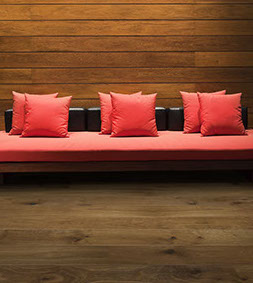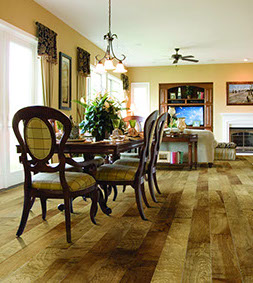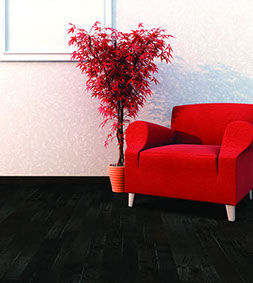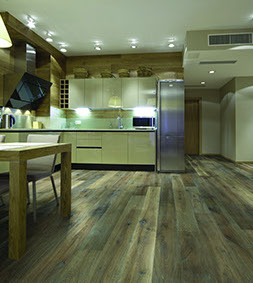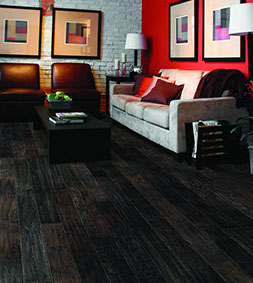Hardwood
When making decisions on flooring for a home, it’s always important to ask the right questions, and have them appropriately answered. Never walk into a store, pick something up off of a shelf, and leave. Flooring is not bullet proof. Work with a quality local retailer to gather the best understanding of the broad options available in flooring today.
NRF Distributors’ Hardwood Division manages a number of flooring product categories available today. Below is a brief synopsis of a few of the major categories.
Solid Hardwood
For as long as buildings have been using hardwood as flooring, people have been using solid hardwood. It has come in many widths, lengths, and thicknesses. Today most solid hardwood is cut to a ¾” thickness, lengths between 1’ and 8’, and widths between 1 ½” and 5 ¼”. These boundaries can be pushed, but it must be done VERY carefully, and this kind of work is considered more “custom”.
Solid Hardwood flooring is still a very popular choice for homeowners and builders. Roughly half of all solid flooring that is installed is unfinished, and then layers of finish are added after installation. The growing trend over the last few decades has been towards prefinished hardwood floors. The advent of more advanced equipment at flooring factories has made prefinished flooring a much more viable, acceptable option. In fact, factory finished floors are thought to now be much more durable than unfinished floors that must be finished in the home. Consumers can now buy prefinished solid hardwood in retail outlets all over the country, whereas unfinished solid was once considered a “lumber yard” type product, and thus tougher to access by the average consumer. The standardization of prefinished, solid hardwood has made the product much easier to sell and handle for retailers and consumers.
Engineered Hardwood
Solid Hardwood has its limitations, specifically when the conversation turns to how hardwoods deal with moisture. The larger market that is solid hardwood is limited when considering what consumers want for flooring visuals. Today’s trends are moving toward wider, longer products. A hardwood mill can cut solid hardwood to any ultra-wide width that a customer would like, but it will not lay flat in the home if the floor is introduced to even moderate moisture fluctuations. This is where Engineered Hardwoods step in.
Most Engineered Hardwood is made of 100% hardwood. The engineering that takes place is when a “core” of hardwood or plywood is used as a substrate on which a solid hardwood veneer is affixed. An engineered hardwood is designed to be able to withstand fluctuations in moisture that would naturally occur over time within a home, within reason. The increased ability to resist movement as a result of moisture fluctuations has made it possible for hardwood flooring manufacturers to push the limits of hardwood flooring to accommodate for consumer demand. Home owners want 7”, 8”, 9”, and 10” wide floors in their homes. Engineered hardwoods have made those visuals possible, although moisture levels on the home still need to be monitored diligently for optimum performance.
The benefits of engineered hardwood flooring do not end at wider widths, and more stable products. Engineered also offers the ability make lower-profile products, like ½” or 3/8” thick floors. Floors like this make it possible for hardwood to be installed all over the house, even the basement, while maintaining one visual. Engineered also offers price point variation where it once never existed. Solid hardwood tends to be a very fixed cost market with varying qualities, but moving to engineered can provide some savings to the homeowner in certain product categories.
There will always be new products. Always work with a local retailer to understand the best choice for a home and lifestyle.
